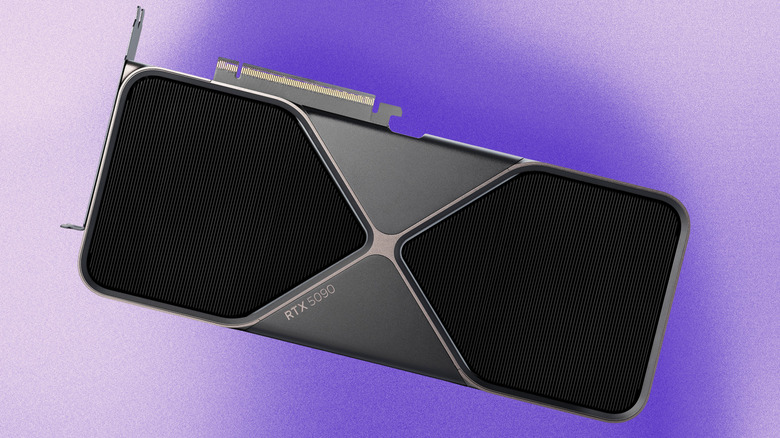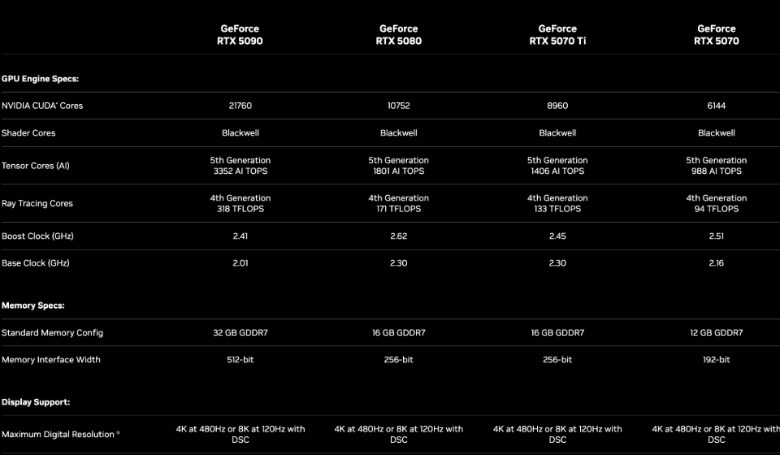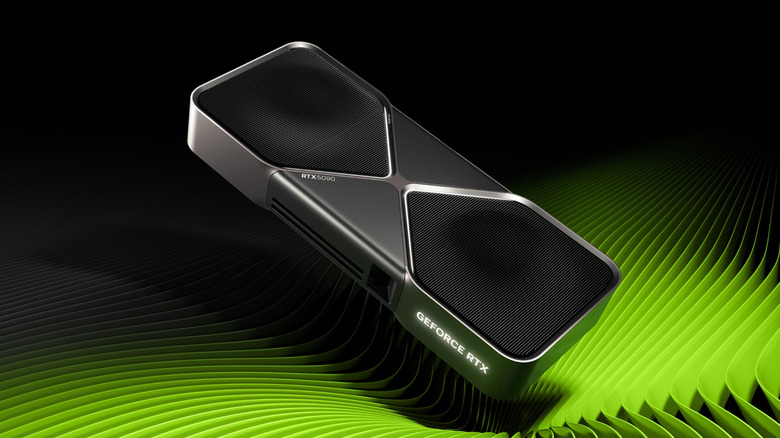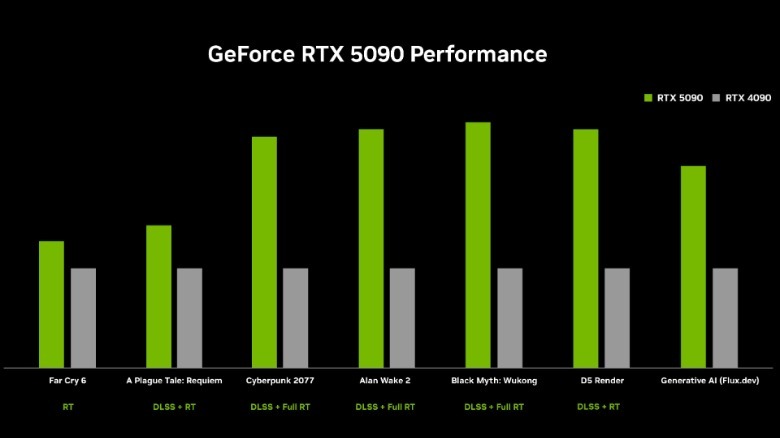NVIDIA RTX 5070 Vs 5080 Vs. 5090: How Do These GPUs Compare In Price & Performance?
At CES 2025, Nvidia lifted the covers from its next-gen desktop and laptop graphics cards based on the Blackwell architecture. The company introduced three GPUs in the GeForce RTX 5000 series, arming them with fourth-gen ray-tracing cores and fifth-gen Tensor cores. At the summit is the GeForce RTX 5090, which features an astounding 92 billion transistors and delivers an impressive 3,352 AI TOPS performance.
Nvidia is touting a straight 2x gain in raw output compared to its yesteryear flagship, the GeForce RTX 4090 graphics engine. Notably, the company has also paid special attention to the laptop versions as well, noting that the GeForce Blackwell GPUs for laptops offer "all the features of desktop models." Tailored even for thin and light laptops, the chip titan claims the Max-Q flavor of its GeForce RTX 5000 series graphics cards offers a 40% gain in battery life.
One of the most exciting additions arriving atop the new Nvidia GPUs is DLSS 4, which brings Transformer-based DLSS Ray Reconstruction and Super Resolution models into the picture. In games, the system would deliver increased details, higher stability, less ghosting, and improved anti-aliasing.
To tone down latency in games, the GeForce RTX 5000 series silicon also enables a tech called Frame Warp, which speeds up frame rendering and reduces latency by up to 75%, claims the company. AI infusion is another core upgrade this year, and it injects RTX Neural Shaders into the mix. The end result, per the company, is "a massive leap in realism for game characters and environments."
NVIDIA RTX 5000 Series hardware & price differences
In case all the enhancements mentioned above sound enticing, well, prepare to fork out some serious cash. The flagship GeForce RTX 5090 GPU is priced at $1,999 and will be available starting January 30, 2025. For that hefty sum, you get a graphics engine with 21,760 CUDA cores with a peak clock speed of 2.41 GHz, a 512-bit memory interface, and a cool 32GB of GDDR7 of memory.
A notch below sits the GeForce RTX 5080 GPU, which cuts the number of CUDA cores by nearly half, reaching all the way down to 10,752 cores. This one provides 16GB of GDDR7 memory, relies on a 256-bit memory interface, and trims the Tensor core AI output to 1,801 TOPS, down from the GeForce RTX 5090's 3,352 TOPS. Fittingly, the asking price of this one trickles down to $999, and it will hit the shelves alongside its flagship sibling.
Then we have the GeForce RTX 5070 GPU in vanilla and Titan (Ti) flavor. The standard card packs 6,144 CUDA cores, delivers 988 TOPS worth of Tensor grunt, and shaves the graphics memory figures down to 12GB of GDDR7 configuration. It is priced at $549 and will go on sale in February. The GeForce RTX 5070 GPU Ti, on the other hand, offers 8,960 CUDA cores and packs in 16GB of GDDR7 memory. It carries a sticker price of $749, and will be available via partners such as Asus, Gigabyte, PNY, Zotac, and MSI, among others.



